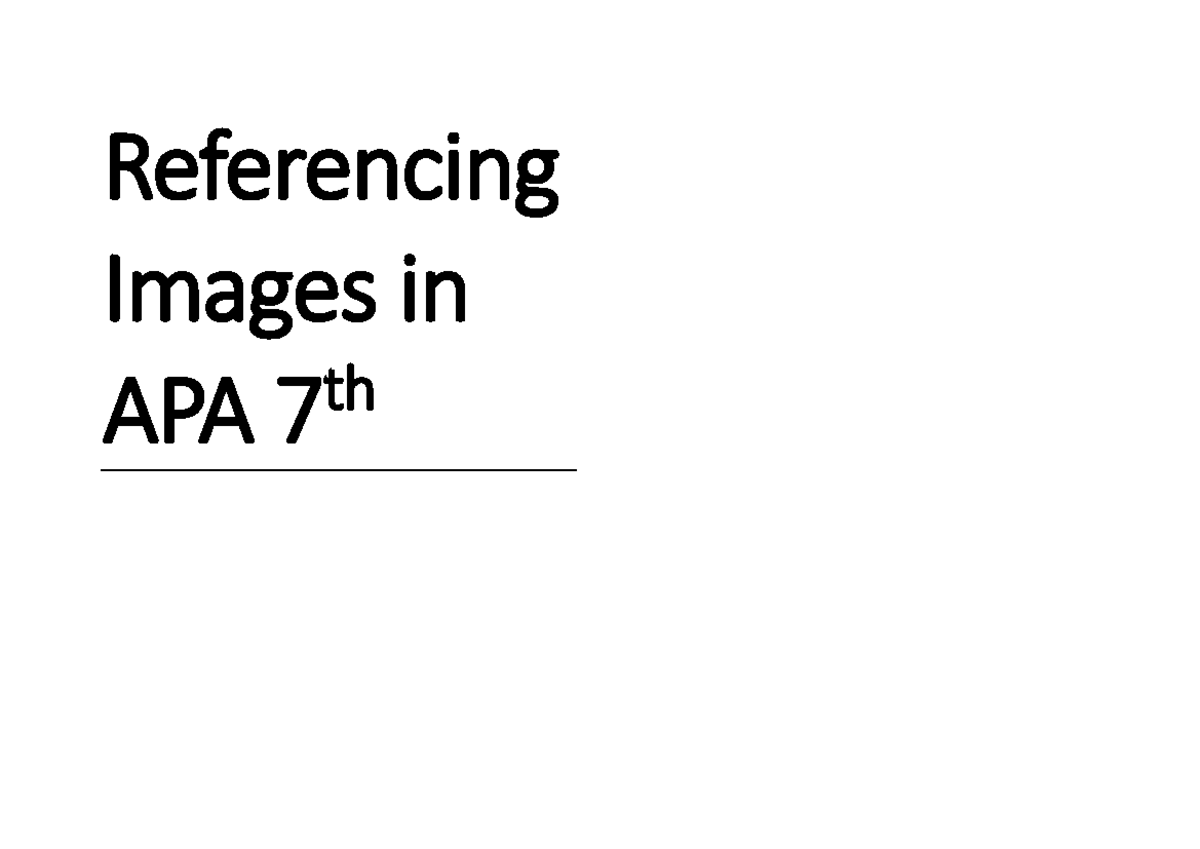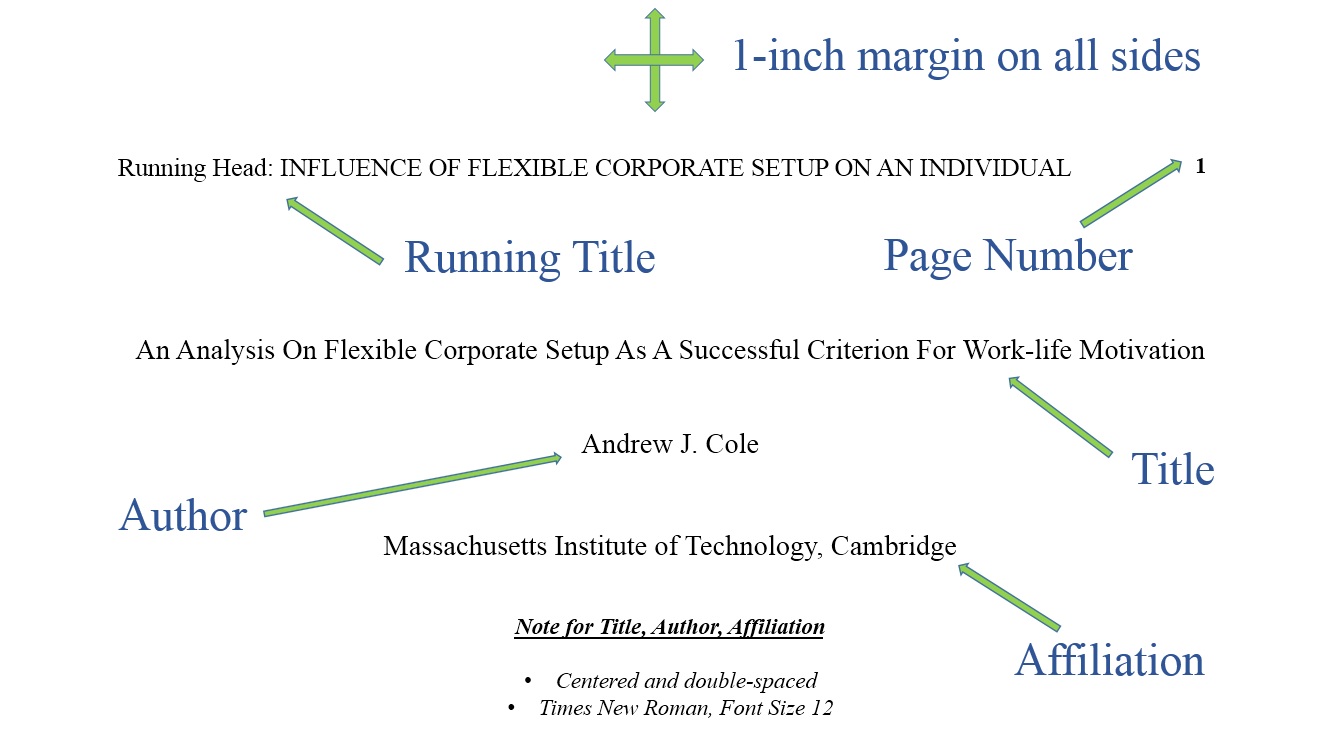Images can greatly enhance your APA paper, making it more engaging and easier to understand. However, including them correctly is crucial to maintain academic integrity and professionalism. In this post, we'll dive into two important areas: understanding APA format for images and choosing the right images for your paper.
Understanding APA Format for Images

When incorporating images into your APA paper, it's essential to adhere to the guidelines set forth by the American Psychological Association. Here are the key points to keep in mind:
- Image Placement: Place images after the paragraph where they are first mentioned. This ensures a smooth reading experience.
- Numbering: Label each image as a figure (e.g., "Figure 1") and number them in the order they appear in your paper.
- Captioning: Each figure should have a caption below it that includes a brief description and, if applicable, the source. For example:
Figure 1. A chart showing the correlation between study habits and academic performance. Adapted from Smith, J. (2020).
This format not only helps readers understand the context but also provides credit to the original source when necessary.
Another important aspect is the image quality. Ensure that images are clear and high-resolution. Blurry or pixelated images can detract from your paper's professionalism.
Lastly, remember to include any necessary copyright permissions if you're using copyrighted images. It's always best practice to use images that are either in the public domain or licensed under Creative Commons, which often require only attribution.
Also Read This: Sizing Images for Sublimation Tumblers: A Quick Guide
Choosing the Right Images for Your Paper

Selecting the right images is more than just finding something visually appealing; it’s about enhancing your paper's message and clarity. Here are some tips to guide you:
- Relevance: Choose images that are directly related to your content. For instance, if you’re discussing the impact of climate change, images of affected areas, graphs, or infographics can be particularly effective.
- Quality over Quantity: It’s better to include a few high-quality images than to overload your paper with many mediocre ones. A well-placed, impactful image can speak volumes!
- Variety: Consider using a mix of charts, photos, and diagrams. This variety can cater to different learning styles and keep readers engaged.
For example, if you’re writing a paper on social media trends, you might include:
| Type of Image | Purpose |
|---|---|
| Infographic | Summarizes key statistics about user engagement. |
| Photo of a social media campaign | Illustrates real-world application of your topic. |
| Graph | Shows growth trends over time. |
In conclusion, the right images can significantly enhance your APA paper. By ensuring they are relevant, high-quality, and well-formatted, you’ll not only enrich your content but also engage your readers more effectively. So, get creative, and let those visuals help tell your story!
Also Read This: A Step – by – Step Guide to Help You Download Bilibili Video Without Watermark
3. How to Cite Images in APA Style

When it comes to including images in your APA paper, it's crucial to properly cite them. This not only gives credit to the original creators but also enhances the credibility of your work. Here's how to do it:
Image from a Website: If you found an image online, your citation should look something like this:
Author, A. A. (Year). Title of image [Format]. Website Name. URL
For example:
Smith, J. (2020). Sunset over the mountains [Photograph]. Unsplash. https://unsplash.com/photos/abc123
Image from a Book: If you're using an image from a book, you should format it like this:
Author, A. A. (Year). Title of image [Format]. In B. B. Editor (Ed.), Title of the book (Page number). Publisher.
Example:
Doe, J. (2018). The beauty of nature [Illustration]. In R. R. Editor (Ed.), Nature's Wonders (p. 45). Green Publishing.
Tips for Citing Images:
- Always include the author's name, date, and title of the image.
- Use italics for the title of the image and the book.
- Remember to include the URL if the image is online.
By following these guidelines, you'll ensure that your citations are clear and accurate, allowing readers to easily find the original sources.
Also Read This: How to Record Gaming Videos for YouTube
4. Inserting Images into Your Document
Now that you know how to cite images, let's dive into the practical side: how to insert those images into your document seamlessly. This may vary slightly depending on the software you’re using, but here are the general steps:
Using Microsoft Word:
- Click on the Insert tab in the toolbar.
- Select Pictures and choose This Device if the image is saved on your computer.
- Locate your image, click Insert, and it will appear in your document.
- Adjust the size and position as necessary—click and drag the corners to resize.
Using Google Docs:
- Go to the Insert menu and select Image.
- Choose where to get your image from (Upload from computer, Drive, Photos, etc.).
- Select the image and click Open (or its equivalent), and it will insert into your document.
- Resize by clicking on the image and dragging the corners.
Formatting Images:
Once you’ve inserted an image, you might want to add a caption. In APA style, you should include a brief description of the image below it. Here’s how:
Figure 1. Description of the image. © [Year] by [Author/Artist]. Reprinted [or Adapted] with permission.
For example:
Figure 1. Sunset over the mountains. © 2020 by John Smith. Reprinted with permission.
This format provides context to the image while adhering to APA guidelines. Remember, images should be relevant to your content and help illustrate your points effectively.
Incorporating images into your APA paper not only enhances the visual appeal but also strengthens your arguments. So, don’t hesitate to use them wisely!
Also Read This: How to Update Your CV on LinkedIn for a Fresh Profile
5. Best Practices for Image Quality and Resolution
When including images in your APA paper, ensuring high quality and appropriate resolution is crucial. Poor-quality images can distract from your message and lead to misunderstandings. Here are some best practices to keep in mind:
- Use High-Resolution Images: Aim for images that are at least 300 DPI (dots per inch). This resolution ensures that when printed, your images will appear sharp and clear.
- Choose the Right File Format: JPEGs are great for photographs, while PNGs work well for graphics with text or line art. Avoid using formats like GIF for professional documents, as they often lose quality.
- Consider Image Size: The dimensions of your image matter, too. While high resolution is important, ensure that the image isn’t excessively large, as this can slow down your document or presentation. A good balance is around 5" to 7" on the longest side.
- Check Licensing: Always ensure you have the right to use any image you include. Websites like Unsplash and Pixabay offer high-quality, royalty-free images that you can use legally.
- Optimize for Clarity: Adjust brightness, contrast, and sharpness as needed. Simple edits can greatly enhance the visibility of crucial details in your images.
By following these best practices, you’ll not only enhance the overall appearance of your APA paper but also ensure that your audience can easily interpret the images you’ve included.
6. Common Mistakes to Avoid When Using Images
While images can significantly enhance your APA paper, there are common pitfalls that you should be aware of. Avoiding these mistakes can save you from potential embarrassment or misunderstandings:
- Neglecting Image Attribution: Always provide proper citations for your images. Failing to do so can lead to plagiarism accusations. Follow APA guidelines for referencing images, just as you would for text.
- Using Images Without Permission: Ensure that you have the right to use any image you include. Using copyrighted images without permission is not only unethical but can also lead to legal issues.
- Ignoring Image Placement: The placement of your images matters. Ideally, images should be placed close to the relevant text to provide context. This helps your reader understand the connection between your text and the visual.
- Overloading Your Paper with Images: While visuals are effective, too many images can overwhelm your readers. Be selective and only include images that genuinely enhance your argument or illustrate key points.
- Forgetting to Label Images: Each image in your paper should have a clear label or caption. This not only provides context but also helps your readers understand what they’re looking at immediately.
Avoiding these common mistakes will not only improve the professionalism of your paper but also enhance the clarity and effectiveness of your visual communication. Remember, quality over quantity is key when it comes to images in your APA paper!
 admin
admin








